What we do
- GRI 2‑6 Activities, value chain and other business relationships
- GRI 203‑1 Infrastructure investments and services supported
ACWA Power has four areas of operation:
How it works
Photovoltaics (PV) is the conversion of particles of light into electricity. Solar panels are usually made from several units of PV cells made of semiconductor materials, such as silicon, that form an electrical circuit. When sunlight is captured, electrons are released and captured in the form of an electric current.
Concentrated Solar Power (CSP) systems generate solar power by using mirrors or lenses to focus a large area of sunlight onto a small area. Electricity is generated when the concentrated light is converted to heat, which drives a steam turbine connected to an electrical power generator.
Wind power is the use of air flow through wind turbines to mechanically power generators for electricity. Like our solar farms, wind farms connect multiple turbines directly to the power grid, replacing conventional power stations. Wind power varies significantly over the year and is often complemented with other sources of electricity to ensure consistent power generation.
Battery Energy Storage Systems (BESS) consist of rechargeable batteries that can store energy from different sources and discharge it when needed.
ACWA Power’s position
ACWA Power plans to achieve net zero by 2050 and be a key enabler of the decarbonisation strategy for KSA and the countries where it operates. Over the past decade, ACWA Power has reduced the solar PV tariff by more than 82.6% and the Concentrated Solar Power (CSP) tariff by more than 61.4%.
Energy storage is a vital solution, giving flexibility to renewable power generation and making it more sustainable. Storage is deployed in our projects in the form of BESS or CSP technology. Today our portfolio includes the largest single‑site CSP and BESS facilities in the world.
Example projects
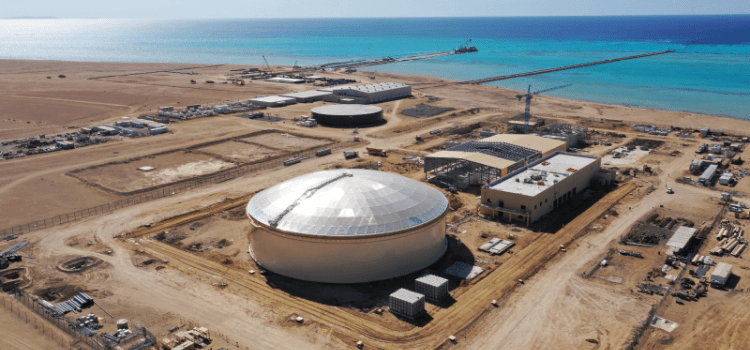
The Red Sea project
One of KSA’s iconic projects, ACWA Power is supporting the largest, fully sustainable off‑grid solution worldwide by constructing 240 MWac PV plant, a 1,228 MW/h Battery Energy Storage System, and an SWRO plant, which will produce 32,500 m³/day.
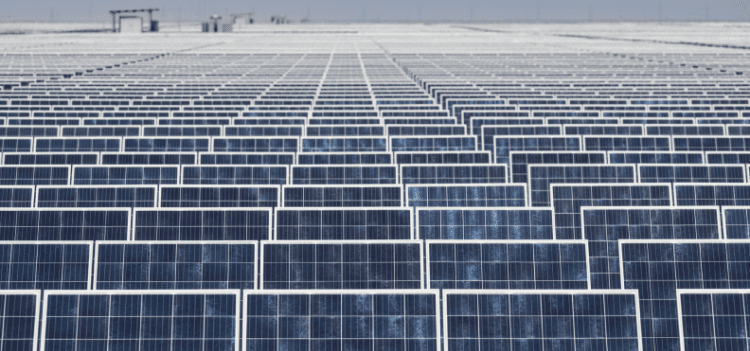
Sakaka Solar PV (KSA)
The single‑axis PV solar panel plant at Al‑Jouf, Sakaka, has a capacity of 300 MW. ACWA Power has a 70% stake in the project and it operates under a power purchase agreement with the Saudi Power Procurement Company for a period of 25 years.
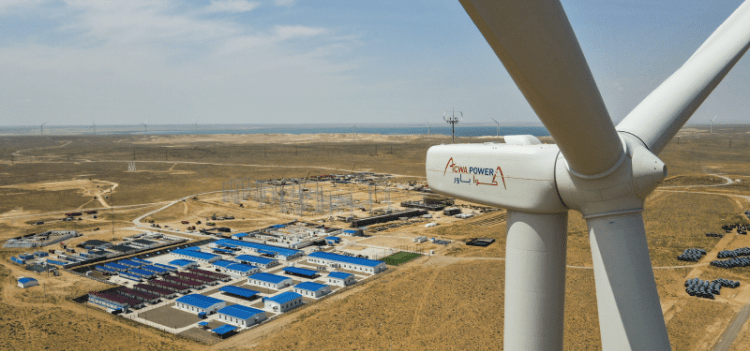
Aral Wind Farm (Uzbekistan)
Central Asia’s largest wind farm, with a capacity of 5 GW and a project cost of USD 5.3 billion, is expected to start operating in Q2 2031. The offtaker is the National Electric Grid of Uzbekistan.
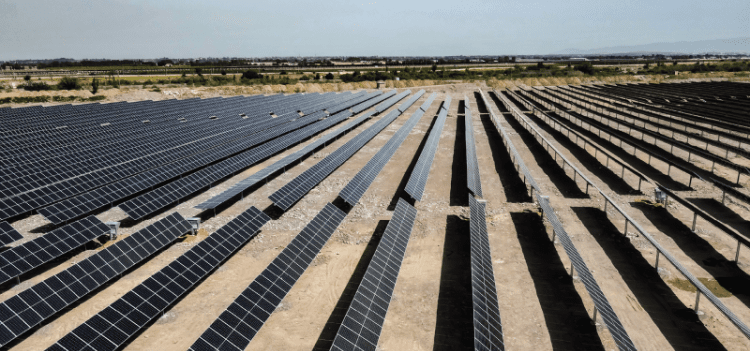
Tashkent Riverside Solar PV + BESS (Uzbekistan)
The 200 MW Riverside PV + BESS project in Uzbekistan includes a 25‑year Power Purchase Agreement with the JSC National Electrical Grid, and will be a ‘Build, Own, Operate, Transfer’ project in the Tashkent region.
How it works
Reverse osmosis (SWRO) is a water purification technology that uses semipermeable membranes and pressure to separate salts from water. Reverse osmosis plant membrane systems typically use less energy than thermal desalination plants.
Thermal desalination is the process of boiling water, using a vacuum distillatory, at less than atmospheric pressure.
ACWA Power’s position
ACWA Power is the largest private water desalinator in the world and has the largest SWRO plants in the world, the largest hybrid solar PV SWRO plant and the first, and only, 100% green SWRO plant in the world.
ACWA Power has focused on SWRO rather than thermal desalination, reduced the water tariff by more than 60% and reduced the Specific Power Consumption by 87% in a decade.
Example projects
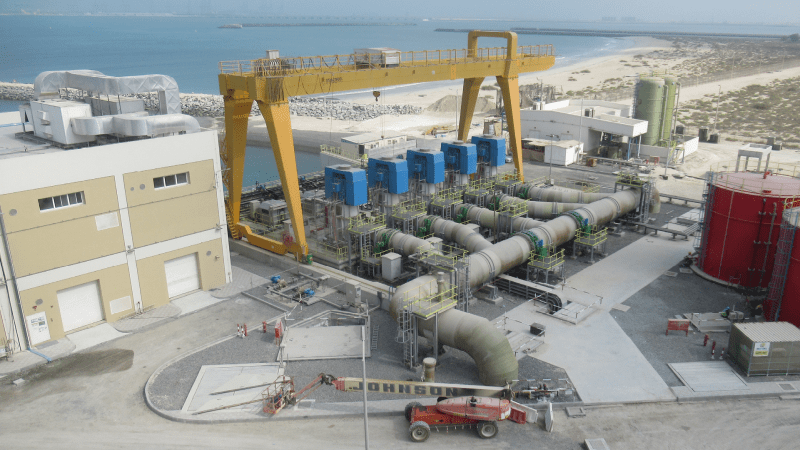
Al Taweelah IWP (UAE)
The world’s largest SWRO plant, producing 909,218 m³/day of desalinated water.
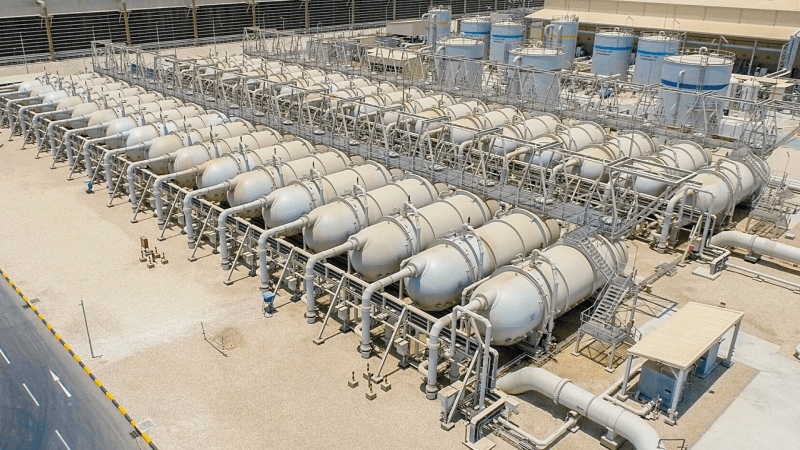
Al Dur 2 IWWP (Bahrain)
Al Dur 2 produces 227,000 m³/day of desalinated water, using reverse osmosis.
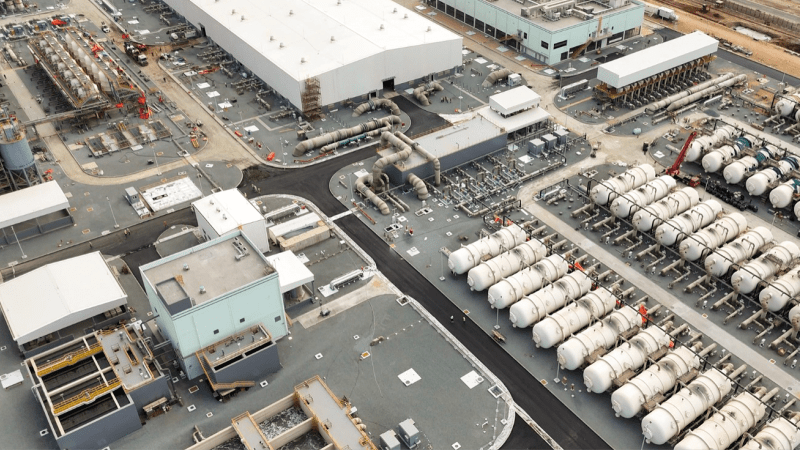
Shuaibah 3 IWPP (KSA)
Shuaibah 3 IWP, a seawater desalination plant in Saudi Arabia with a 600,000 m³/day capacity, will use reverse osmosis technology and a mix of grid power and 65 MWp solar PV.
How it works
Green hydrogen and its derivatives are the new renewables. The electrolysis process passes a strong electrical current, supplied from renewable sources, through a tank of water (H20), to split the molecules into its two constituent elements, and then converts the hydrogen into ammonia for ease of transport.
ACWA Power’s position
ACWA Power is first mover in at‑scale green hydrogen and is constructing the world’s biggest green hydrogen project in the NEOM region. This makes us, along with our partners, the largest player in green ammonia, with the NEOM Green Hydrogen Company and our second project in Uzbekistan, catering to fertilisers locally and for export in the future. Several MoUs have been signed to develop green hydrogen projects in Indonesia, Thailand, Egypt, and Uzbekistan, and to create a hydrogen supply chain, including a terminal, from KSA to Europe.
Example project

NEOM Green Hydrogen Company (KSA)
The NEOM Green Hydrogen Company is the world’s largest utility‑scale, commercially‑based hydrogen facility powered entirely by renewable energy. The project will include a 4 GW solar and wind farm to power the plant and a dedicated to jetty to transfer ammonia to tanker ships. The project will produce up to 600 tonnes per day of carbon‑free hydrogen when operational, saving 5 million tonnes of CO₂ annually.
How it works
Gas power plants utilise turbines to ignite gas in order to produce combustible gases to power a generator. Natural gas power stations generate far less GHG emissions than coal‑ and oil‑fired plants used in many countries.
ACWA Power’s position
Flexible generation currently in our portfolio is represented by Combined Cycle Gas Turbine (CCGT) assets and will remain a viable technology alternative in emerging markets given the growth prospects in these economies.
Example project

Hassyan (UAE)
The Hassyan power plant in Dubai is designed to minimise fuel consumption and fuel gas emissions. The plant has four GE/Alstom units, each of 600 MW capacity, and was originally designed to operate on coal as the main fuel but subsequently, based on a decision by DEWA, the offtaker, ACWA Power switched it to operate on natural gas. This will avoid approximately 30 million tons of CO2 emissions by 2030.
The plant is designed to be carbon capture ready, meaning that the installation of carbon capture equipment in the future should be without the need for any modification to the plant or hinder the plant availability.
We currently have four Heavy Fuel Oil (HFO) assets with a total capacity of 6.4GW, one of which is being converted to an SWRO desalination plant. We are exploring various options with offtakers for the three other assets to make them more efficient, with lower emissions.